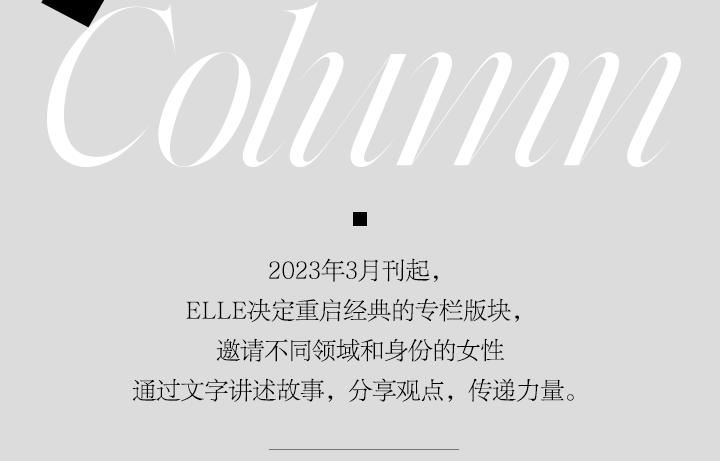
Zhu Yujie
Curator and writer
If you're a fan of the Beatles, you may remember the cover of your eighth album, and female artist Jann Haworth is remembered for creating this iconic cover with her husband. Although she is rarely mentioned, a little research reveals that she was a pioneer of soft sculpture, a rich form of artistic creation, and a career closely related to the Pop Art movement of the 1960s. Her works have many joyful and interesting elements, such as donuts made of soft sculptures, jewelry, breakfast, etc., and the wrinkles on women's faces made of colored cloth strips, which are full of innocence, deconstruct the dark and sad emotions of our real world, and also prove that serious art can also be full of life and joy.
Every time I rediscover a talented female artist, I feel like I have found a pearl in the deep sea, and I am excited.
They've been there for a long time, and all we have to do is keep our eyes open. I venture to say that Jann Haworth is yet another female artist indebted by art history, why do I say "again", because such cases abound. Back in the Renaissance, there was great creativity and innovation in the art world, but few female artists were able to show their talents due to society's prejudice and discrimination against women. Art historians have begun to do more research on these neglected female artists to honor their contributions. For example, Artemisia Gentileschi (1593-1656) and Sofonisba Anguissola (1532-1625), two female artists who were overlooked during the Renaissance, are typical examples of neglected during the Renaissance. The well-known Impressionists, known only by the names of Manet, Cézanne, Van Gogh, Berthe Morisot (1841-1895) to Mary Cassatt (1844-1926), who made great contributions to Impressionism in terms of formal elements and creative subjects, were always mentioned with lace news, and artistic achievements were not discussed as they deserved.
And some familiar female artists often have to go through some twists and turns to be truly recognized. The famous Mexican painter Frida Kahlo (1907-1954), whose work was long underestimated and not fairly evaluated until the 80s of the 20th century, should not have imagined that more than 50 years after her death, she would become a global popularity and become the "most expensive" artist in Latin America. Georgia O'Keeffe (1887-1986) was unacceptable in her time. Although her work today seems to have a unique artistic style, it was considered sexual at the time and was criticized and criticized. Undoubtedly, she was one of the most important female artists of the 20th century, and she and her work were overlooked and undervalued in her era, and it was not until after her death that she was given the widespread attention and praise she deserved as important masterpieces of 20th-century American art.
Most of the art history we read was written by men, Janssen and Gombrich, and women artists are only a handful of them. The Story of Art, known as the bible of art, did not mention any female artists in its first edition in 1950. If you're a curious person, you might be like Linda Nochlin, a famous art historian and pioneer of feminist art studies, who can't help but ask, "Why aren't there great women artists?" "Use this poignant question as an opportunity to see what went wrong, whether it was the severe inequalities and barriers women faced in society and culture, the prejudice and contemptation of women artists in the art evaluation system, or the lack of access to art education and industry—most art schools restricted or refused to admit girls until the mid-20th century. Female artists, like all other women, are caught in the balance between family and career, and this forced choice makes it difficult for them to have enough time and energy to devote themselves to making art.
From my major, it is natural to ask: Why in the long river of history, there are as many male artists as carp crossing the river, but few female artists like gold in the sand? Is this unfair record a "flaw" in our long civilization journey? How many female artists does art history owe to it?
The emergence of feminist art history in the 70s of the 20th century aroused endless enthusiasm in the art history community. Women art historians, represented by Linda Nochlin, have relentlessly criticized the writing of art history in the past, and the evaluation of female artists is no longer modeled on the standards of male artists, but re-evaluates their historical status, proving to the world their importance in art history.
As a female curator, I hope to constantly research and discover the female artists of this era. Recording them with a pen, doing academic research on their works, and constantly curating exhibitions from women's perspectives so that the talents and values of female artists can be seen, and through this new perspective, the art world has carried out more in-depth thinking and discussion on diversity and equality such as gender, race, and sexual orientation, and built a more equal, inclusive and pluralistic world. I hope we are all fortunate enough to be witnesses of a new art history.
Content Producer: Sun Zhe
Curated by: ELLE Task Force
Edited by Sherry
This column is from the April issue of ELLE of World Fashion